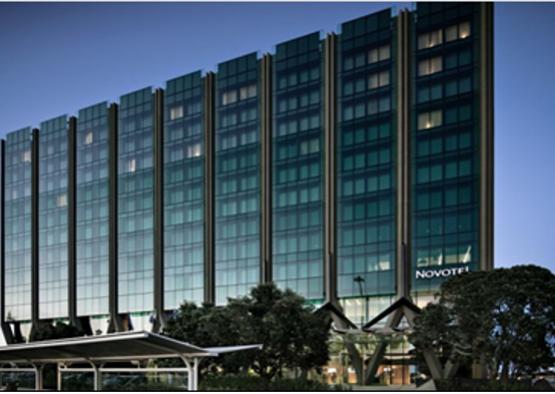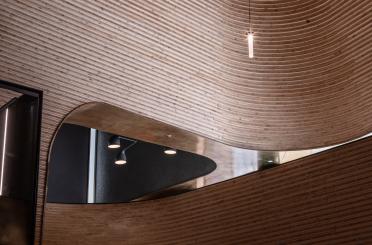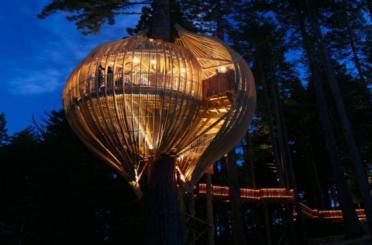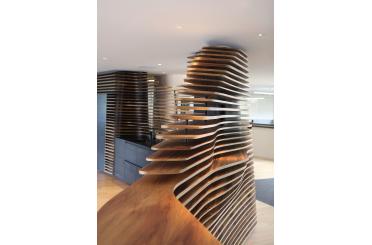
Overview
The $65 million 263-room hotel, which opened in May this year, is located just 50 metres from the international terminal. The hotel, infused with subtle references to New Zealand’s natural environment, culture, art and heritage, was developed by Tainui Group Holdings in partnership with Auckland Airport and Accor, operators of the hotel.
The hotel’s designers came up with a host of ways to minimise background noise. One solution was to use sound-absorbing solid wood wall panels to line the hotel’s foyers, reception areas, conference rooms and lift shaft facings.
Structure
The panels were made by Auckland timber manufacturer, Woodform Design Ltd, which has developed leading edge systems for bending wood and MDF. One of the company’s newest products, Aformatek acoustic timber wall panels was selected for its sound-proofing qualities. Woodform Design manufactured and installed more than 450 acoustic timber wall panels for the hotel, spanning more than 550 square metres. The panels provide relief from the airport noise, and counterbalance the prevalent use of hard surfaces such as glass, stone, marble.
Interior
Each wall panel was made of strips of Maple Beech of varying width and depth to achieve both a visually appealing and acoustically efficient panel. Each piece of Southland Maple Beech had to be sanded, sealed and polished on all six sides to ensure it would remain stable in the hotel’s air-conditioned environment. The bulk of the panels were made on four different jigs with different layouts, each strip of beech was separated by a 5mm gap with a 2.5mm gap between panels. Precision at all stages of the manufacture and installation of the panels was critical to the job’s success. The panels had to be installed to strict instructions to ensure that identical panels never faced each other. With so many parallel lines, there only a tolerance of less than 1mm, and required the construction of special panels adjusted to fit corners and meeting points with other construction materials. The brief also required that the wall panels should be fitted in a way that they can be dismantled easily for any future repairs and restoration or replaced if necessary.



